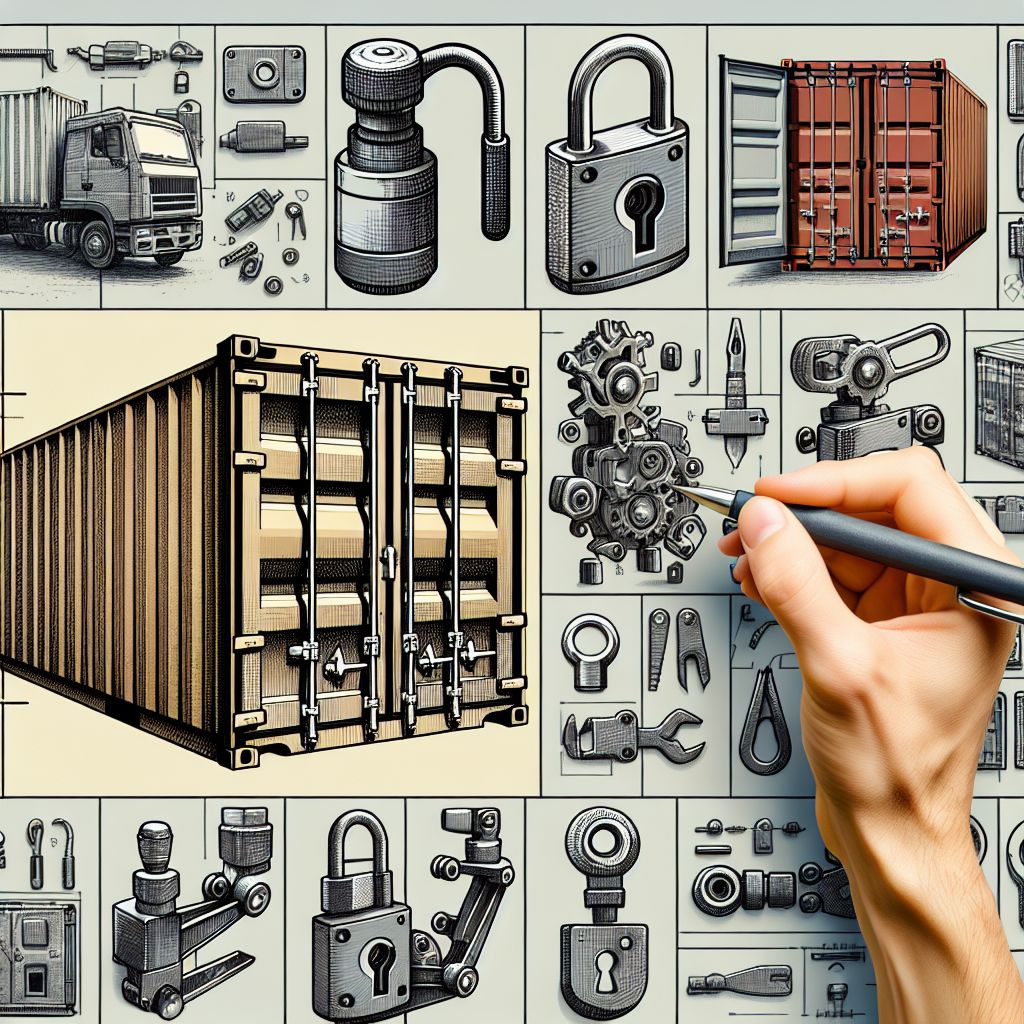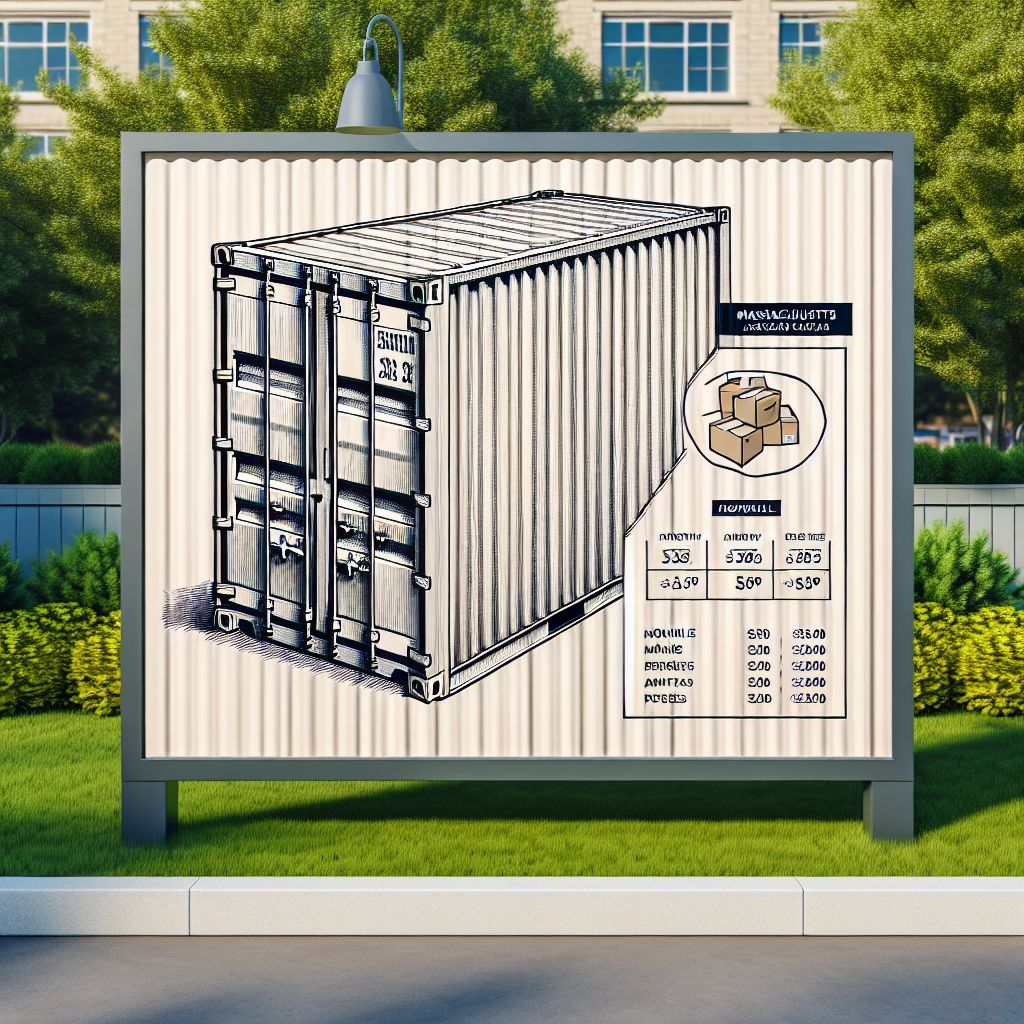
Key Takeaways
- Shipping container door lock boxes and handles are critical for protecting your cargo.
- Regular inspections can help identify when replacements are needed.
- Choosing the right replacement parts ensures compatibility and enhances security.
- Installing new lock boxes and handles can be a straightforward process with the right tools and instructions.
- Understanding the different types and benefits of lock boxes and handles can aid in making the best choice for your needs.
Securing Your Cargo: Container Door Lock Box & Handle Replacement
Imagine you’re on a treasure hunt, and you’ve finally found the chest. But there’s a catch – the lock is rusty, and the key won’t turn. That’s a bit like what happens when the lock box and handle on your shipping container give out. They’re the guardians of your cargo, and when they’re compromised, so is the safety of everything inside. But don’t worry, with a few simple steps, you can replace these critical components and keep your treasures secure.
The Role of Door Lock Boxes and Handles in Container Security
First things first, let’s talk about why lock boxes and handles are so important. They’re not just there to open and close the door; they’re a key part of your container’s security system. The lock box is like a safe for your padlock – it shields it from tampering and cutting. And the handle? It’s what keeps the door tightly closed, so no unwanted guests can sneak in.
My Favorite Container Homes Resource
I compared the top 3 Container Home Guides
to discover the ultimate resource!
See my top recommendation here
Identifying Worn-Out Components
Now, how do you know when it’s time for a replacement? Here are some tell-tale signs:
- Rust or Corrosion: If you see orange flaking or pitting, it’s time to act.
- Difficulty in Operation: Struggling to turn the handle? It shouldn’t be a workout to open your container.
- Visible Damage: Dents, cracks, or bends can weaken the integrity of the lock box and handle.
Don’t wait for a breach to happen. Keeping an eye out for these signs and acting promptly can save you a lot of trouble down the line.
Selecting the Right Replacement Parts
When choosing new lock boxes and handles, you’ve got to think like a detective. Make sure they’re the right fit for your container. Check the size, the material – steel is a strong choice – and the compatibility with your padlocks. You want a lock box that can withstand a brute force attack and a handle that’s ergonomic yet sturdy.
Step-by-Step Replacement Guide
Ready to roll up your sleeves and get to work? Here’s what you’ll need to do: familiarize yourself with shipping container accessories, door locks, and replacement parts.
- Gather Your Tools: You’ll need a drill, bolts, nuts, and a wrench, among other things.
- Remove the Old Hardware: Take off the old lock box and handle carefully.
- Position the New Lock Box: Line it up with the drill holes, and bolt it in place.
- Attach the New Handle: Screw it in securely, and make sure it moves freely.
- Test Your Work: Lock and unlock a few times to ensure everything’s in order.
With the right parts and a bit of elbow grease, you’ll have a new lock box and handle installed in no time.
Types of Shipping Container Door Lock Boxes
Lock boxes come in different shapes and sizes, each with its own set of features. Let’s dive into some of the most common types:
Basic Bolt-On Lock Boxes
These are the trusty standard in container security. Easy to install, they bolt onto the door of your container, creating a casing for your padlock. Most importantly, they’re a cost-effective way to deter theft and break-ins.
Example: The ‘Defender’ series lock boxes, known for their robust design and ease of installation, are a popular choice among shipping container owners.
High-Security Lock Box Features
For those needing an extra layer of security, high-security lock boxes are the way to go. These bad boys often come with tamper-proof designs and are made from thicker, tougher steel. They’re like the superheroes of lock boxes, taking a stand against bolt cutters and drills.
Here’s what sets them apart:
- Heavy-Duty Construction: They’re built to withstand serious attempts at forced entry.
- Advanced Locking Mechanisms: Some models come with built-in locks that are pick-resistant.
- Reinforced Casing: Extra layers of steel mean extra peace of mind.
Choosing a high-security lock box is like putting your container into a suit of armor – it’s protection you can trust.
Compatible Padlock Types
Choosing the right padlock for your new lock box is like picking the best goalie for your soccer team – you want the best defense possible. There are a few types of padlocks that work well with shipping container lock boxes:
First, you have the classic ‘discus’ padlock, known for its round shape that minimizes exposure of the shackle. Then, there’s the straight-shackle padlock, which is designed to snugly fit the lock box, leaving little to no room for bolt cutters. Lastly, the closed-shackle padlock, which features a protective shoulder, further restricting access to the shackle.
- Discus padlock – circular design that hides the shackle from attack.
- Straight-shackle padlock – fits tightly within the lock box, offering little leverage for bolt cutters.
- Closed-shackle padlock – has a protective shoulder for an added layer of security.
It’s essential to choose a padlock that matches the strength of your lock box. Opt for one that’s weather-resistant and has a hardened steel shackle. This way, you’re not just relying on the lock box alone – you’re setting up a formidable team to keep your cargo safe.
Remember, the best padlock is the one that can withstand the challenges of the environment it’s in, whether that’s extreme weather or the potential for tampering.

When and Why to Replace Your Container Door Handles
Handles may seem like a small part of container security, but they play a huge role. Over time, handles can wear down from constant use or exposure to harsh weather, making them difficult to operate or even compromising the seal of your container. That’s why it’s essential to know when to replace them.
A fresh handle not only ensures smooth operation but can also prevent unauthorized access. After all, a handle that’s easy for you to use should be a handle that’s hard for others to tamper with.
Signs of Wear: From Rust to Mechanical Failure
There are a few red flags that signal it’s time to replace your container door handle:
- If you notice rust or corrosion, which can weaken the metal and cause breakage.
- If the handle feels loose or wobbly, indicating internal wear that could lead to failure.
- If you’re struggling to get a good grip or it takes more force than usual to open the door, it’s time for an upgrade.
These signs of wear and tear are more than just inconveniences – they’re potential security risks. A compromised handle can be the weak link that lets a thief into your container.
Enhancing Access with New Handles
Replacing your container’s door handle isn’t just about maintaining security; it’s also about improving access. A new handle can make opening and closing your container doors a breeze, which is especially important if you’re accessing your container frequently. Think of it as upgrading to a smoother, more reliable experience every time you need to get inside your container.
Installation Tips for Maximum Security
Installing a new lock box or handle is not just about following the steps; it’s about ensuring that each step contributes to the maximum security of your shipping container. Here are some tips to keep in mind:
Tools and Equipment Needed
Before you start, make sure you have all the necessary tools and equipment:
- A power drill with the correct drill bits for metal.
- Wrenches or socket sets for tightening bolts and nuts.
- Screwdrivers for any screws involved in the handle installation.
- A measuring tape to ensure accurate placement.
- Protective gloves to keep your hands safe during the process.
Having the right tools at hand will not only make the installation process smoother but will also prevent damage to the new components and your container.
Ensuring Proper Alignment and Fit
When installing the lock box and handle, alignment is key. A misaligned lock box can leave gaps that might be exploited, and a handle that doesn’t fit properly can compromise the door’s seal. Measure twice and install once to ensure everything lines up correctly. It’s the attention to detail here that makes all the difference in security.
Make sure to:
- Line up the lock box and handle with the existing holes or mark new ones accurately.
- Check that the door closes snugly with the new handle in place.
- Ensure that the padlock fits comfortably within the lock box without any forcing.
Proper alignment ensures that your lock box and handle work as intended, keeping your container secure.
Testing the Lock Mechanism Post-Installation
After installation, it’s crucial to test the lock mechanism thoroughly. Close and lock the container door, and then try to open it without the key to simulate a break-in attempt. If everything is installed correctly, the door should remain firmly shut. This test will give you peace of mind that your container is secure
Shipping Container Door Lock Boxes:
References:
- Universal Containers – Weld-On Lock Box
- Container xChange – Shipping Container Lock Types
- SEA BOX – SB2231 Lock Box Bolt-On Kit
- Shipping Container Tool – Best Types of Shipping Container Locks

FAQ
Why is it important to replace container door lock boxes and handles?
Replacing container door lock boxes and handles is crucial for maintaining the security of your cargo. These components are the first line of defense against theft and unauthorized access. Over time, they can wear out, rust, or become damaged, making them less effective. Regular replacement ensures that your container remains secure and that your lock mechanism functions properly.
How often should I inspect my container’s lock box and handles?
You should inspect your container’s lock box and handles regularly, at least every few months, especially if the container is frequently used or exposed to harsh weather conditions. Look for signs of wear, rust, or damage, and ensure that the handle operates smoothly and the lock box is not compromised. Promptly addressing any issues can prevent security breaches and extend the lifespan of your container.
Can I install a new lock box and handle myself?
Yes, you can install a new lock box and handle yourself if you have the necessary tools and are comfortable with basic DIY tasks. It’s important to follow the manufacturer’s instructions closely and ensure that the new components are properly aligned and securely attached. If you’re unsure or lack the tools, it’s best to hire a professional to do the installation to guarantee the security of your container.
What should I do if my container door doesn’t seal properly after replacing the handle?
If your container door doesn’t seal properly after replacing the handle, you should first check the alignment and ensure that the handle is installed correctly. Adjust the hinges if necessary to achieve a tight seal. If the problem persists, it’s advisable to consult with a professional who can diagnose and fix the issue, as an improper seal can compromise the security and weatherproofing of your container.
Are there any regulations regarding container door lock boxes?
Regulations regarding container door lock boxes can vary depending on the region, the shipping company, and the nature of the cargo. It’s important to comply with any specific requirements for lock boxes to ensure that your container meets security standards. For example, certain high-value or hazardous materials may require enhanced security measures. Always check with local authorities or your shipping provider to make sure you’re following the necessary guidelines.






Leave a Reply